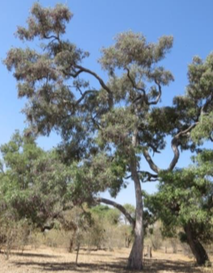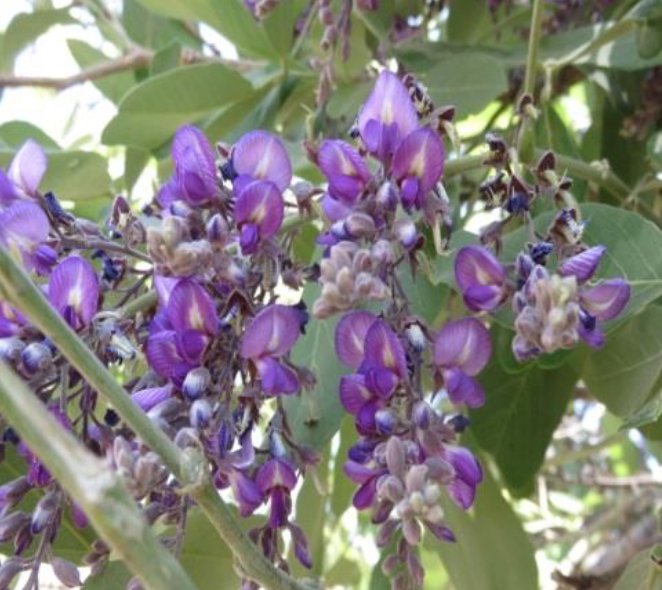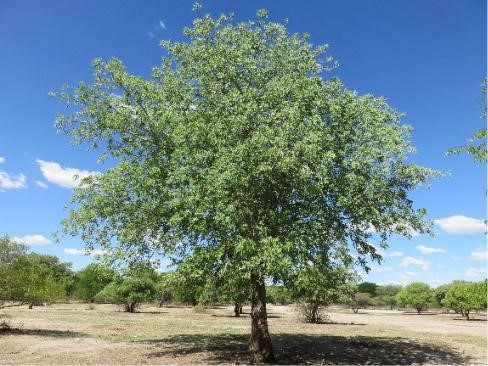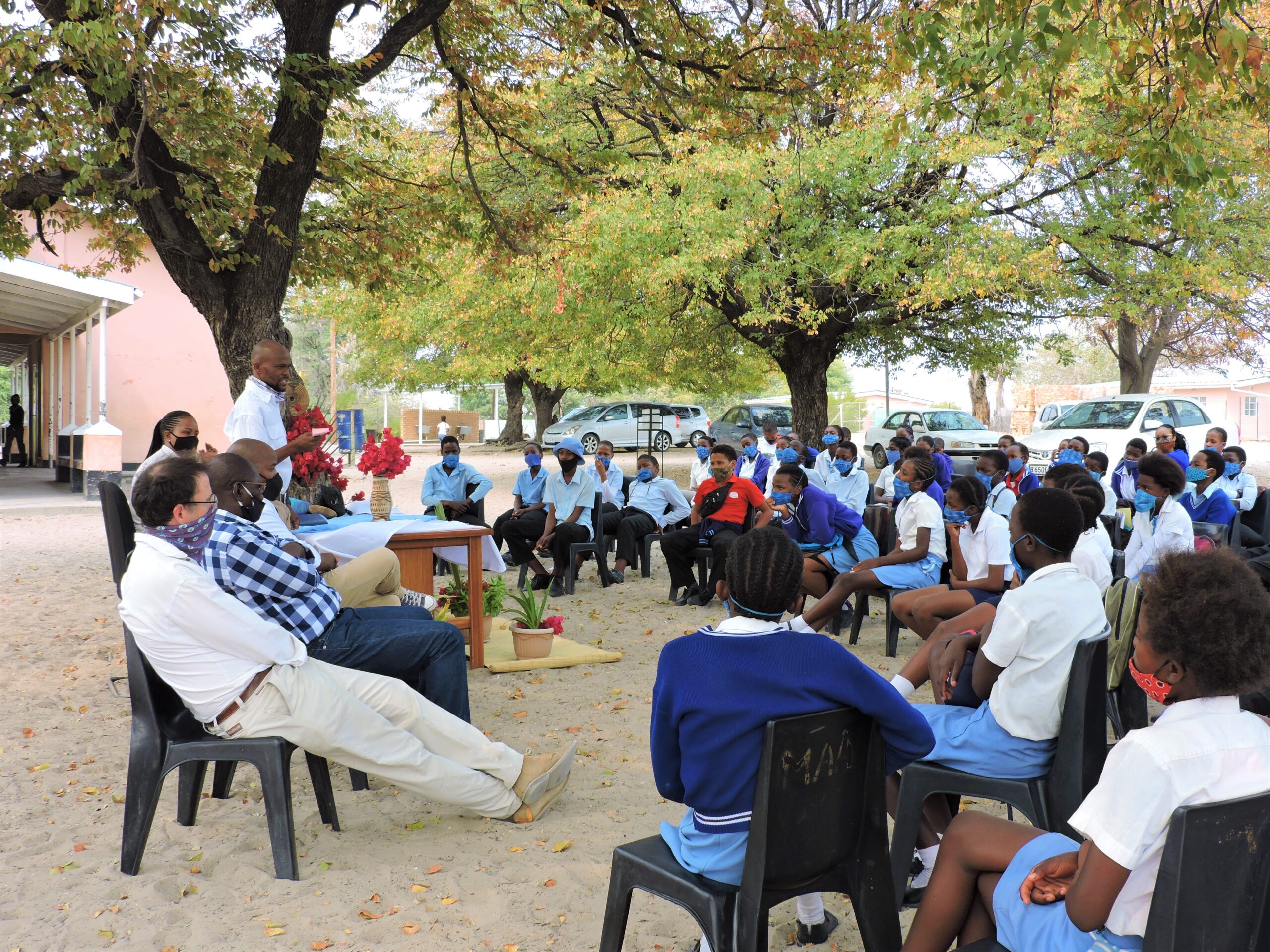Text and photographs by Mmusi Mmusi, Herbarium Assistant at PSUB Herbarium, Okavango Research Institutue
 The commonly called ‘rain tree’ or ‘Apple- leaf’ is known in Setswana as mopororo. Scientifically the tree is known as Philenoptera violacea (Klotzsch) Schrire. It is a member of the enormous Fabaceae family which includes beans, in fact if you open a pod you’ll find bean shaped seeds. When the tree is in flower look closely and you’ll see their beautiful flowers are shaped just like bean or pea flowers.
The commonly called ‘rain tree’ or ‘Apple- leaf’ is known in Setswana as mopororo. Scientifically the tree is known as Philenoptera violacea (Klotzsch) Schrire. It is a member of the enormous Fabaceae family which includes beans, in fact if you open a pod you’ll find bean shaped seeds. When the tree is in flower look closely and you’ll see their beautiful flowers are shaped just like bean or pea flowers.
The derivation of the scientific name Philenoptera is from the ancient Greek words philenos meaning tractable or manageable; and pteros meaning wing. Together the word conveys the meaning that the wing makes the pod manageable for dispersal. Violacea is derived from the Latin word violaceus for the colour violet which refers flowers of the Apple-leaf tree. It is reported that mopororo is frequently attacked by the spittle bug or frog-hopper, whose lifecycle may cause an exudation of water to such extent that the ground under the tree is wet, hence the name raintree. It has also been observed that the falling flowers sound like rain on the dry leaves under the tree.
Mopororo has economic value as the wood is used to make good, attractive household articles such as grinding-blocks and tool handles.
The wood is used commercially to make carvings, grain mortars, building poles and mealie stampers. In Botswana, in the Okavango Delta traditionally mopororo is used to make mokoro, dug-out canoes, although the life span of these mekoro is not long as the wood is prone to rot from fungal infestations. The ideal tree to make a mokoro from is the Sausage tree, moporata in Setswana, Kigelia africana. However finding a big enough straight one these days is unusual. In southern Africa, the raintree is used in traditional remedies. Most parts of the plant are used to treat diarrhoea. The roots are used for gastro-intestinal problems and powdered root-bark is used to treat colds and snakebite. Root infusions are commonly used as part of a hookworm remedy.
Philenoptera violacea, was formerly known as Lonchocarpus capassa. It is a medium to large-sized, deciduous to semi-deciduous tree up to 15 m tall with a wide-spreading, dense and rounded crown. Main stem is tall, straight and bare and invariably bent and twisted.
The bark is grey and flaking in scales on the older branches and main stem, but smooth, light grey and covered with dense hairs on younger branches. The tree exudes sticky red sap when cut. Leaves are alternate, large and unevenly compound with 1–3 pairs of opposite leaflets and have one terminal leaflet. The leaflets are hard and rough in texture, tending to be shiny above and grey-green beneath, with prominent midribs. The terminal leaflets are always much bigger than the lower leaflets. The flowers are usually borne in terminal sprays at the tips of the branches, individual trees vary in colour from white to bluish-pink, mauve or deep violet, they are sweet-scented. The flowers appear from September to December, before or together with the new leaves. Fruit is a flat pod, non-splitting, relatively large, hairless, tapering at both ends, persisting on the tree during winter, usually 2- or 3-seeded. Seeds are kidney-shaped, reddish and compressed.
Mopororo is fairly widespread in distribution in the northern Botswana. Where it occurs at low altitudes drier areas it is mostly on sandy or alluvial soils. These trees are usually found in bushveld, open wooded grassland, on the banks of seasonal streams, near water courses and on floodplains.
Text edited by Frances Murray-Hudson, Project Assistant, PSUB Herbarium Data Mobilization, Okavango Research Institute
Contact us: Mmusimmusi@ori.ub.bw or: fmurray-hudson@ori.ub.bw
Find us on Facebook: https://www.facebook.com/okavangoplantsidents/








0 Comment